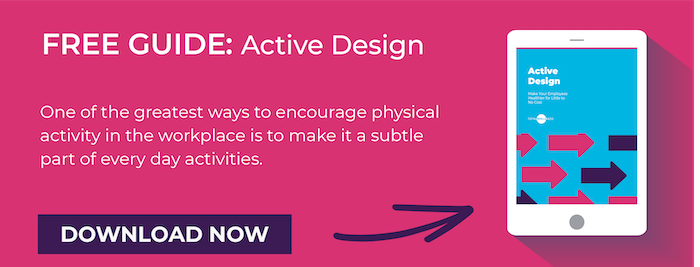 Wearable fitness trackers can be a great tool for employee wellness. Many employers have begun to use wearables as tools for tracking physical activity, measuring sticks for challenge participation and even as incentives.
Wearable fitness trackers can be a great tool for employee wellness. Many employers have begun to use wearables as tools for tracking physical activity, measuring sticks for challenge participation and even as incentives.
All of those things make wearables work in wellness—for some companies. Unfortunately using wearable fitness trackers isn’t always a feasible option for many companies. In some cases, the tech trend doesn’t even fit the company culture.
If you’re one of these companies that can’t quite get on board with the activity tracker trend, don’t worry! There are still plenty of ways to increase and promote physical activity among your employees.
Physical activity is a key factor in maintaining a healthy lifestyle. It’s become all too common, however, for employees to live most of their workday sitting in one place. This sedentary lifestyle puts employees at risk for a variety of chronic health conditions including obesity, heart disease and even diabetes.
Your employee wellness program is the perfect platform on which to address the lack of physical activity in the workplace. Again, the tech trends and wearable devices aren’t bad. But they’re only one way to address this growing public health problem.
Here are some other great options for stepping outside of trendy wearable fitness trackers to help your employees create a physically active lifestyle.
Self-Reported Activities
Many physical activity wellness challenges can be taken care of via self-reporting. This means that your employees are responsible for keeping track of and reporting their progress in order to be part of the challenge. It’s basically doing a challenge on “the honor system.”
Many employers provide tools online in which employees can self-report. Others provide physical forms or tracking sheets for self-report use. Still others stick with a more casual system and report progress through interpersonal communication. All of these are just fine!
The most important part of using a self-report system for physical activity is picking a measurement that’s easy for employees to keep track of. Without wearables, tracking steps would be incredibly difficult! Consider tracking things like miles walked, time spent exercising, or number of workout sessions.
Group Activities
Working out in a group not only provides for better workouts and accountability, but it’s a great way to encourage engagement with your employee wellness program. Group workouts at the office probably take on a bit of a different shape than the boot camp they offer at your gym.
Be sure group activities are something in which a majority of employees can participate. This could include walking meetings, or lunchtime walking or jogging groups. You might even consider designating a time each quarter for a company-wide walk, yoga session or sports tournament.
All of these are excellent ways to bring physical activity into the workplace. They can be easily tracked using sign in sheets, so the lack of wearables won’t be a problem!
Active Design
One of the greatest ways to encourage physical activity in the workplace is to make it a subtle part of every day activities. This is the goal of an office with active design.
Active design has to do with the physical space in which your employees work. There are elements of your office space you can adjust to encourage more movement throughout the day. You can check out our full guide on active design here.
A few of our favorite active design elements include:
- Moving shared office equipment (printers, fax machines, etc.) a little farther from personal workspaces
- Opening up a clear, inviting route to and from all staircases
- Creating a “walking path” around your office that takes about ten minutes to complete
- Providing an outdoor work area for employees to utilize on nice days
A sedentary lifestyle has become a huge problem for a large group of employees in our society. Promoting physical activity at work is one way to address sedentary behavior and counteract the negative health effects it leads to.
Wearable fitness trackers are a very useful trend that’s been designed to do just that. Unfortunately, they just don’t work in every employee wellness program. If you don’t have a program that works with wearables, you do have other options for promoting an active lifestyle for your employees.
How do you address physical activity without wearables where you work?



